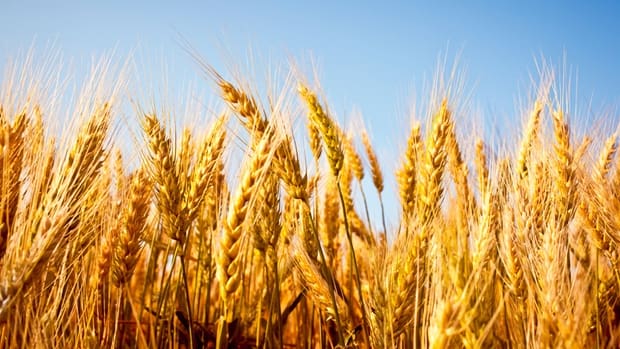Key points:
- Australian winter crop production is forecast to be one per cent higher year-on-year but 24 per cent below historical averages.
- Domestic demand is expected to remain stable at the high levels seen last year, whilst export opportunities are forecast to fall with further potential downside.
- A reduced requirement to bring grain into the East Coast will drive softer values in South Australia and Western Australia as these markets re-align to meet export appetite.
- Strong global supply is expected to keep export markets highly competitive, and keep pressure on domestic values, despite local production pressures.
CHALLENGING conditions across many parts of Australia continue to be the main driver of domestic cereal markets, according to Rural Bank’s ‘Australian agriculture outlook 2020’ report released today.
 The dynamic this season will differ from last, with greater ability for the east coast to draw on crops in Victoria and South Australia, reducing the requirement to draw grain in from Western Australia.
The dynamic this season will differ from last, with greater ability for the east coast to draw on crops in Victoria and South Australia, reducing the requirement to draw grain in from Western Australia.
Rural Bank says record global production is likely to lead to stiff competition and uncertain export demand for exporting states.
Trade tensions, predominately with China, remain present and continue to impact trade flows of barley and canola.
Cereal supply to fall
Rural bank forecasts that Australia’s wheat and barley production will fall 20pc below average.
The most notable year-on-year reduction, a 37pc decrease in Western Australia, combined with persistent poor conditions in New South Wales and Queensland.
Year-on-year, Australia’s barley production is forecast to increase 11pc following increased planted area and improved conditions in parts of Victoria.
Whilst wheat production is forecast to decrease 5pc year-on-year, reflecting the challenging seasonal conditions.
Globally, wheat production is forecast to rise five per cent to a record global crop.
The European Union is forecast to increase 10pc year-on-year whilst crops in Russia and Ukraine are forecast to increase three per cent and 13 per cent respectively.
Cereal demand to rise
Australian domestic wheat demand is forecast to increase one per cent year-on-year, 10 per cent above historical averages.
Competitive export markets and the smaller domestic crop will combine to see wheat exports fall eight per cent year-on-year, 43pc below average.
Australian barley exports are forecast to increase 5pc year-on-year, yet remain 32pc below average as a result of ongoing uncertainty surrounding Chinese and Middle Eastern demand.
Chinese demand for Australian barley is forecast to be 20–25pc lower year-on-year, reflecting a softer domestic feed market due to the African Swine Fever induced liquidation of the domestic pig herd, and the continuing uncertainty of China’s anti-dumping investigation into Australian barley.
Feed grain
Domestic feed markets will need to compete with export buyers in order to keep grain stocks within Australia.
However, improved production in Victoria year-on-year will reduce the requirement to draw grain in from South Australia and WA, allowing these markets to re-focus on export opportunities.
Price movements
Rural Bank expects world wheat prices to increase one to five per cent in the coming months, as a result of weather-related uncertainty for northern hemisphere winter cereal production.
Australian cereal prices are expected to move 10–15pc lower as harvest supplies enter the market, domestic markets reduce their dependency on SA and WA supply, and export-oriented markets re-align to offshore values.
Domestic oilseed supply/demand
Australian canola production is estimated 15pc higher year-on-year, yet remain 25–30pct below five-year averages.
This increase in domestic supply year-on-year, especially in south-eastern Australia, is expected to see interstate movement of canola fall as much as 60pc in 2020, compared to 2019.
Domestic demand is expected to absorb the lion’s share of eastern states production, leaving the majority of WA crops available for export.
A larger exportable surplus will see domestic pricing more closely track movements offshore, particularly in European Union markets which typically accounts for around 70pc of Australian canola exports.
Demand for imported canola in the European Union is expected to be supported by weakening rapeseed stocks in this market which are forecast to reach their lowest levels in 40 years, although large Canadian stockpiles will ensure Australia faces some competition into this market.
Oilseed markets more broadly continue to reflect volatility in soybean values driven by the ongoing US–China trade dispute, and the impact of African Swine Fever on China’s demand for soybean feed products.
Pulses under challenge
Australian pulse production is forecast 10pc lower year-on-year and 30pc below the five-year average.
Indian import tariffs remain prohibitive, and subsequently India remains notably absent from the Australian pulse trade.
Whilst the most recent Indian monsoon season is believed to have been poor, unless this manifests in a reduction in import tariffs demand for Australian pulses in this market is expected to remain subdued.
These factors combined are driving a flat price outlook for Australian chickpeas and lentils for the 2019/20 season.
Faba bean prices reached record highs in 2019 as a result of strong Egyptian demand and a shortfall in global supply.
Increased production in the northern hemisphere will see prices ease in 2020.
Source: Rural Bank
View the full report here.
Grain Central: Get our free daily cropping news straight to your inbox – Click here

HAVE YOUR SAY